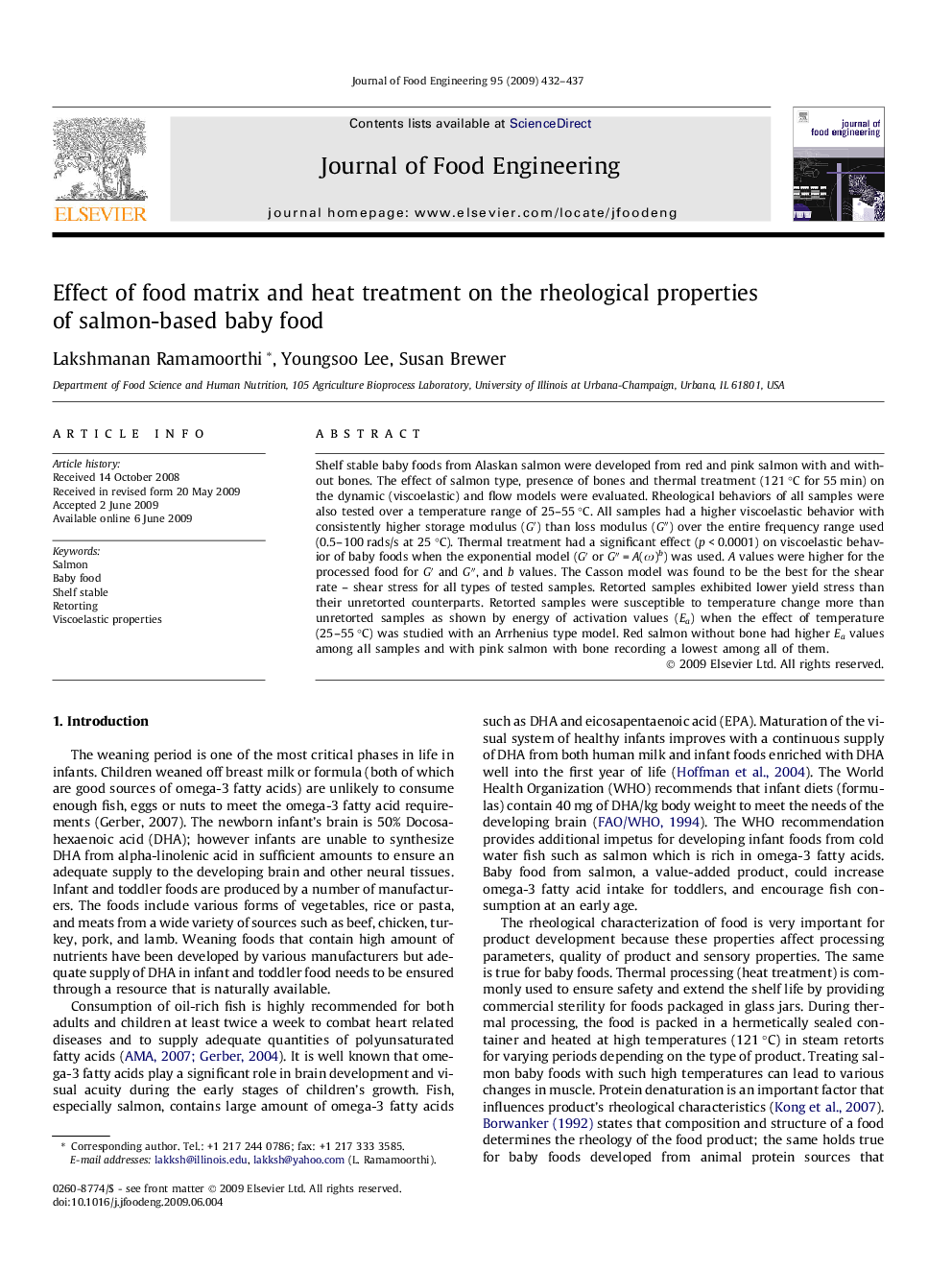| Article ID | Journal | Published Year | Pages | File Type |
|---|---|---|---|---|
| 224764 | Journal of Food Engineering | 2009 | 6 Pages |
Shelf stable baby foods from Alaskan salmon were developed from red and pink salmon with and without bones. The effect of salmon type, presence of bones and thermal treatment (121 °C for 55 min) on the dynamic (viscoelastic) and flow models were evaluated. Rheological behaviors of all samples were also tested over a temperature range of 25–55 °C. All samples had a higher viscoelastic behavior with consistently higher storage modulus (G′) than loss modulus (G″) over the entire frequency range used (0.5–100 rads/s at 25 °C). Thermal treatment had a significant effect (p < 0.0001) on viscoelastic behavior of baby foods when the exponential model (G′ or G″ = A(ω)b) was used. A values were higher for the processed food for G′ and G″, and b values. The Casson model was found to be the best for the shear rate – shear stress for all types of tested samples. Retorted samples exhibited lower yield stress than their unretorted counterparts. Retorted samples were susceptible to temperature change more than unretorted samples as shown by energy of activation values (Ea) when the effect of temperature (25–55 °C) was studied with an Arrhenius type model. Red salmon without bone had higher Ea values among all samples and with pink salmon with bone recording a lowest among all of them.
